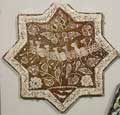

Iran, Kashan, ca. 1260. Lustre-painted ceramic.
G.1983.[...].206, 205. Compare LACMA M.73.5.374.
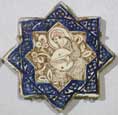

Iran, Kashan, late 13th c. CE.
Compare LACMA M.73.5.377.

Iran, Kashan. Part of a group of tiles datable CE 1270-1275 and associated with palace of Takht-i Sulayman, built for Il-Khan ruler Abaqa Khan. Lustre-painted relief stained cobalt and turquoise.
Inscribed: Ibn Ja'far ibn Muhammad, probably referring to the Shi'a imams, Muhammad al-Baqir and Jafar al-Sadiq.
ME OA G.1983.196
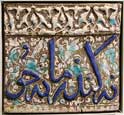
Iran, Kashan. late 13th c. Lustre-painted relief stained with cobalt and turquoise, with a Persian inscription.
ME OA G.1983.194


Iran, Kashan. late 13th c. Part of an inscription frieze, perhaps placed at corner of a mihrab; with verse from Qur'an 48:24-5.
ME OA G.1983.201(1)

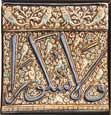
Iran, Kashan. Early 14th c. Belonging to a group associated with shrine of "Abd al-Samad at Natanz, dated AH 707/CE 1308. Lustre-painted relief, stained cobalt and turquoise. The heads of the birds along the cornice were defaced (compare, for example, Hermitage Museum Inv. nos. IR 1363-1365).
Inscription: Qur'an 76:9.
ME OA G.1983.195; +1122
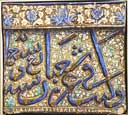

Iran, Kashan. Early 14th c. One dated Sha'ban 709/Feb.-Mar. 1309; the other has Qur'anic inscription 48:4-5. Lustre-painted relief, stained cobalt.
Belong to a group dated AH 709-10/CE 1309-11 signed by Yusuf b. 'Ali b. Muhammad b. Abi Tahir, one of a Kashan family of potters. The date corresponds to the Il-Khanid restoration of the Great Mosque of Isfahan, the only recorded Mongol restoration of the time.
ME OA G.1983.197; 1978.12-30.574


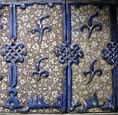


Iran, Kashan, 13th-14th c. CE, with inscription from Qur'an 3:6. Fritware, overglaze lustre-painted with cobalt blue. H. 55 cm; W. of individual sections: 46.cm.
ME OA 1983.204, 1-4
Learn more. Compare LACMA M.73.5.143.


Iran, Kashan, early 14th c. CE.
ME OA 1978.12-30.563; G 1983.493

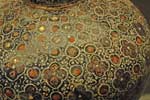
Iran, late 13th c. CE. Enameled in white and red over blue glaze with applied gold leaf (Lajvardina ware--a type of double-fired ceramic).
ME OA 1952.2-14.4


Iran, Kashan, 13th c. CE. Fritware.
ME OA G.256; 1924.1-20.1
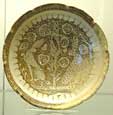
Iran, Kashan, late 13th c. CE.
ME OA G.235
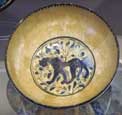
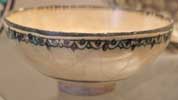
Iran, late 13th-early 14th c. CE. Painted in underglaze black, blue and turquoise.
ME OA 1928.04.19.2
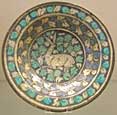
Iran, early 14th c. CE.
ME OA 1988.4-13.3
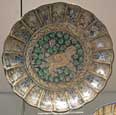
[?] Iran, early 14th c. CE. Fritware.
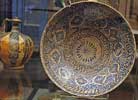
Iran, early 14th c. CE. Painted in underglaze black and blue.
ME OA 1956.3-30.1

Iran, probably Sultanabad, early 14th c. CE. Fritware, gray-green slip, underglaze painted.
ME OA G.280
Compare: LACMA M.73.5.215; Louvre OA 8177.
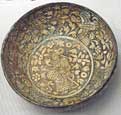

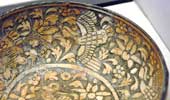
Iran, early 14th c. CE. Fritware, painted in underglaze in black and blue.
ME OA 1952.2-14.6
Compare Victoria and Albert Museum C 10-1960.-


Iran, Sultanabad (?), late 14th or early 15th c. CE. The brass mounts are from the 19th century.
ME OA G,279

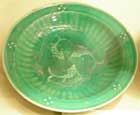
Iran or Egypt, 14th c. (15th?) CE. Design based on Chinese celadons.
ME OA G.284; [] Compare Victoria and Albert Museum C 10-1947, dated ca. 1450-1550.
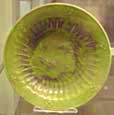
Egypt, 14th c. (15th?) CE. Fritware with green glaze. Design based on Chinese celadons.
ME OA 1928.7-21.6
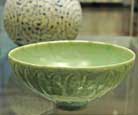
Egypt, 14th c.-15th CE. Fritware with green glaze. Moulded lotus petals on outside from Chinese models.
ME OA 1925.11-21
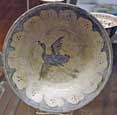
Iran, 15th c. CE. Fritware body painted in underglaze black and blue. ME OA 1929.4-17.3
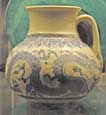
Iran, 15th c. CE. Fritware body painted in underglaze blue, based on a Yuan prototype. ME OA 1949.4-15.1



Central Asia, 1420-1449 CE. Jade. Inscription on side names Ulugh Beg, the Timurid ruler of Samarkand in first half of 15th century. Lip repaired later in Ottoman times. H. 6.4, Dia. 19.4 cm.
ME OA 1959.11-20.1 (36)
Learn more.
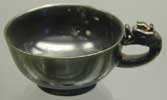
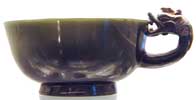
Iran, mid-15th c. CE. Black jade (nephrite).
ME OA 1970.6-4.1
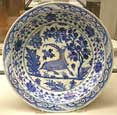
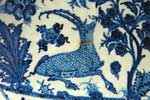

Iran, probably Nishapur, late 15th c. Fritware with blue underglaze decoration.
ME OA 1882.8-5.1
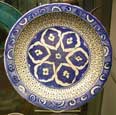

NW Iran, mid-16th c. Kubatchi-type fritware with blue underglaze decoration. The scale motif comes from Chinese porcelain and was widely used in Middle Eastern blue and white ware. Cf., with different central motif, Louvre Inv. no. MAO 710.
ME OA 1962.11-17.1
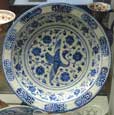

Iran, possibly Nishapur, early 16th c. Kubatchi-type fritware with blue underglaze decoration.
ME OA 1964.10-13.1

NW Iran, 16th c. Kubatchi-type fritware.
ME OA 1904.6-30.1
Cf. Louvre Inv. no. MAO 656.
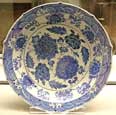
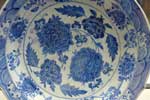

Iran, possibly Nishapur, end of 16th c. Kubatchi-type fritware with blue underglaze decoration.
ME OA 1965.7-29.1
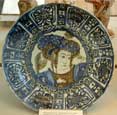


NW Iran, late 16th-early 17th c. Kubatchi-type fritware with blue underglaze decoration. The head is probably based on a late 16th c. Qazvin miniature; emblems on sides come from "Kraak" import Chinese porcelain.
OA 1896.6-26.6
Cf. Louvre Inv. no. 0A 5544.

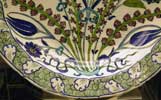


Turkey, Iznik, ca. 1550-1600 CE. The bouquet is tied at bottom with Chinese cloud band, which is also found in centers of daisies. Rim has Chinese rock and wave design.
ME G 1983.21


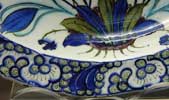
Turkey, Iznik, ca. 1550-1600 CE. Rim has Chinese rock and wave design.
ME G 1983.49
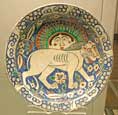

Turkey, Iznik, late 16th CE. This imagery is found on a range of Middle Eastern objects, from Saljuk coins of the 13th century, to the facade of the Shir Dor medrese in Samarkand in the 16th century and Qajar coins in the 19th.
ME OA 1983.123

Iran, Mashhad, early 17th c. Fritware, the design based on late 16th-century chinese porcelain such as example in background.
OA 1896.6-26.2
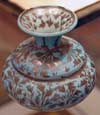
Iran, Safavid period, 17th c. Fritware with turquoise glaze and lustre painting.
ME G 385


Iran, Safavid period, 1600-1650 CE. Technique based on Chinese fahua ware but shape is from Indian metalwork. The metal lid is 19th c.
ME OA 1978.12-30.627

Iran, Safavid period, 17th-18th CE. Moulded decoration under greenish-white glaze. Probable Indian metalwork prototype. H.: 29 cm.
ME OA +739
Learn more.

Iran, Safavid period, late 17th CE.
ME G 380
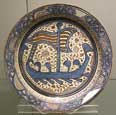
Islamic Spain (?). [id needed]